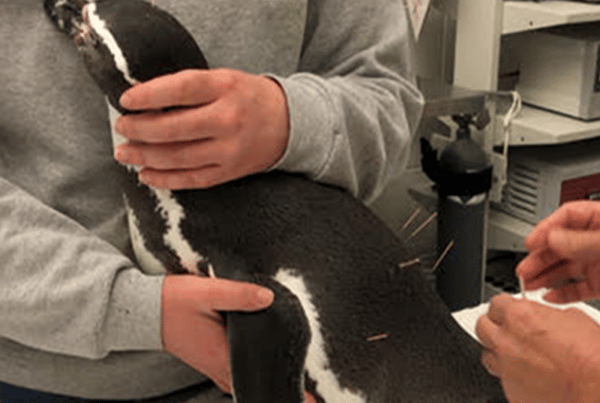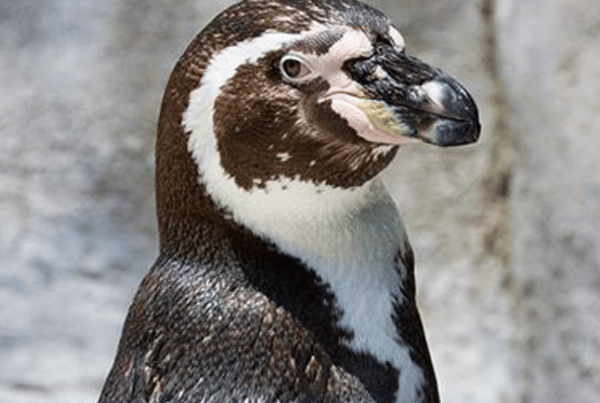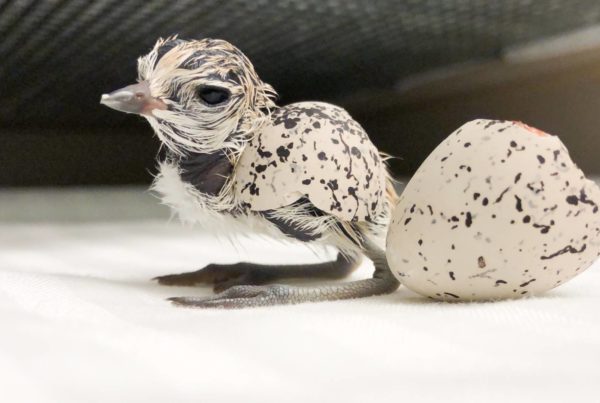by Dorian Edwards, Santa Barbara Zoo
In the forests of eastern Russia lives a subspecies of leopard named for the river that runs through the region. Amur leopards are the most Critically Endangered big cat, with approximately 100 individuals remaining in the wild. Unfortunately, encroaching development and poaching to the south of their habitat and extreme conditions to the north have sequestered these big cats to a small, dwindling region along the Russia-China border.
Currently, more of these big cats live under human care than in the wild and many are part of a hopeful attempt to reintroduce the species to their historical range. The Santa Barbara Zoo is part of the Amur leopard Species Survival Plan, a program involving cooperative management of an ex situ species population to maintain a stable population for the long term future.
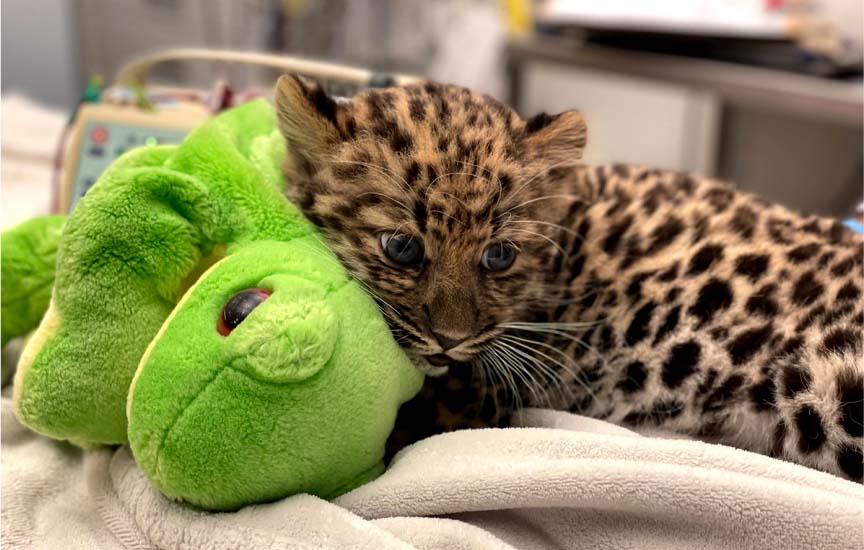
“The Amur leopard SSP manages the breeding of this species to maintain a healthy and self-sustaining population that is both genetically diverse and demographically stable in North America, in addition to participating globally in cooperative conservation activities such as research, public education, reintroduction and field projects,” says Dr. Julie Barnes, the Zoo’s Vice President of Animal Care & Health.
For the first time in twenty years, a bundle of hope arrived at the Santa Barbara Zoo in the form of a leopard cub named Marta. Born on August 6, 2021 at a whopping 1.1 pounds to parents Ajax and Kasha, Marta’s birth was great news to the conservation world.
Her mother, Ajax, arrived at the Zoo in 2016 in hopes she would breed successfully and diversify the gene pool, and diversify she did! A lover of climbing, she represents the nimble-footed forest dwellers of her wild counterparts and, according to Dr. Barnes, has settled into motherhood very well. The two spent a few months bonding behind the scenes where Marta emulated her mother’s climbing explorations. “Marta continues to amaze us with her climbing and balancing abilities and there are few places she cannot access, which keeps Ajax very busy,” says Zookeeper Karen Wylie.
The Zoo has been attempting to breed Amur leopards for several years as part of the conservation of this species and future reintroduction efforts. With successful neonatal development, the Zoo, our staff, and community are thrilled by the opportunity to watch Marta grow up and serve as a beacon of light for her species. When a recent exam brought an unexpected result, Zoo staff held its collective breath.
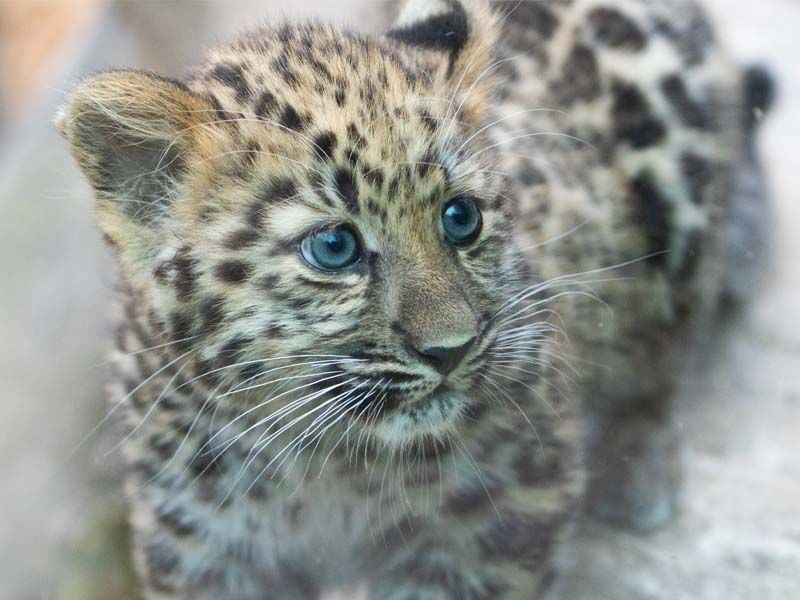
In October, the vet team discovered that Marta’s gums were very pale, and she had a critically low level of red blood cells. Though the initial test results did not point to a specific reason for the anemia, the team worked tirelessly to find an answer. As her red blood cell level continued to decline, it became necessary to perform a blood transfusion. Her mother, Ajax, was a blood donor match and on a table with a stuffed frog and cozy blankets, Marta received a successful transfusion while surrounded by her incredibly caring team.
Over the next weeks, Marta’s red blood cell level continued to increase, and her condition stabilized. She became active and feisty once again, and stayed with her mom Ajax, who continued to give the cub incredible maternal care. Wylie adds that “Ajax is a bold and confident leopard and Marta appears to be taking after her adventurous mother. As novel items are being introduced to Marta, she approaches with curiosity to investigate and demonstrates little fear.”
With the crisis behind us, the dedicated vet team continues to monitor Marta closely and the Zoo staff can finally take a deep breath. This level of determined attentive care is essential to the prosperity of healthy endangered species. In a world that has been radically changed by human behavior, it is conservation organizations like the Zoo and individuals like the Zoo’s animal care team that are paving the way towards a more cooperative future with our wild kin.
In early November, Marta was introduced to the outdoor habitat, slowly spending more and more time in front of the public with mom Ajax nearby. She’s now out every day (animal behavior permitting) and growing up right before our eyes!



